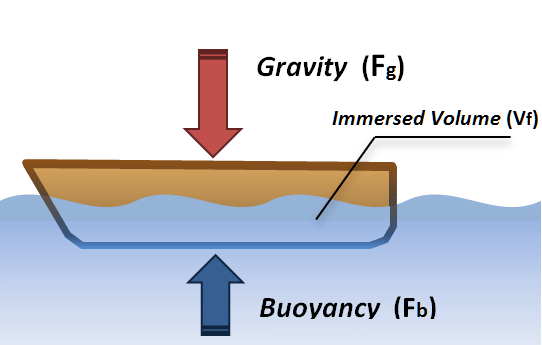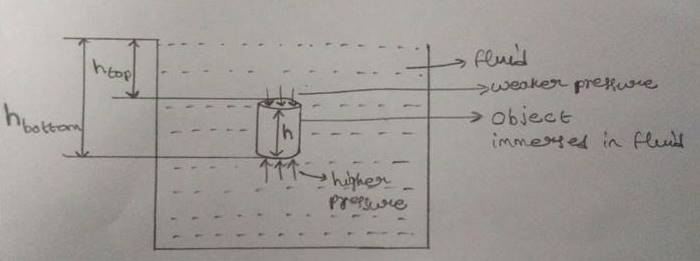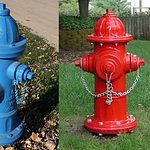Today we will discuss about buoyancy force or simply called buoyancy effect. When a body is immersed or submersed in a fluid of different density an upward direction force act on it. This force is called buoyancy.
When a body floats in water it is acted upon by two forces
- Vertical downward force of gravity which is equivalent to weight of the body, acts at center of gravity.
- Vertical upward force of buoyancy, which is equal to weight of the water displaced by the immersed body and which passes through the centroid of the displaced volume of water
( i.e., center of buoyancy ).
Archimedes Principle:
Archimedes state that ” Buoyant force exerted by the fluid is equal to the weight of the displaced fluid.”

When a body is partially or fully immersed in a fluid an upward force is experienced by the body. This upward force is called up-thrust or buoyant force.
Buoyant force is in vertical direction.
What is Buoyancy?
Buoyancy is the phenomenon responsible for up-thrust.
Center of Buoyancy:
Centre of buoyancy is the point through which the buoyant force acts.
Centre of buoyancy is the centroid point of the immersed part of the floating body.
How to Determine Buoyant Force?
The reason that why fluids exert upward buoyancy force on the submerged objects is due to the pressure difference between the bottom surface and upper surface of the object.
In fluids such as water as you go deeper, the pressure increases.
Let us consider an object immersed in the fluid, the pressure ( downward pressure ) exerted on the top surface of the object will be less than the pressure (upward pressure ) exerted on the bottom surface of the object.
OBJECT IMMERSED IN FLUID
Here hTop = Height of the depth, of top surface of the object immersed in the fluid.
hBottom = Height of the depth, of the bottom surface of the object immersed in the fluid.
h = Height of the object = [ hBottom – hTop ]
FBoyancy = Fup – Fdown
Fup = upward force ( i.e., the force applied by water on the bottom surface of the object pushing, it in upward direction)
Fdown = downward force ( i.e., the force applied by water on the top surface of the object pushing, it in downward direction.)
FBoyancy = Buoyancy force
We know that PRESSURE ( P ) = [ FORCE (F) / AREA (A) ]
- P = ( F/A )
- F = P * A
So, Fup = PBottom * A
Fdown = PTop * A
FBoyancy = [ (PBottom * A ) – (PTop * A ) ]
From the hydrostatic guage pressure formula Pguage = ρgh
FBoyancy = [ ( ρgh Bottom * A ) – ( ρgh Top * A ) ]
FBoyancy = ρgA (h Bottom – h Top )
[(h Bottom – h Top ) = h Object ]
FBoyancy = ρgA hObject
[ VOLUME (V) = AREA (A) * HEIGHT (H) ]
Here “ V ” is not the volume of object, it is the “volume of displaced fluid ( Vf )”
FBoyancy = ρg Vf
ρ = Density of the fluid in which the object is immersed.
g = Acceleration due to gravity.
Here we have discussed about buoyancy force and the method to determine it. If you have any query regarding this article, ask by commenting. If you like this article, don’t forget to share it on social networks. Subscribe our website for more informative articles. Thanks for reading it.


